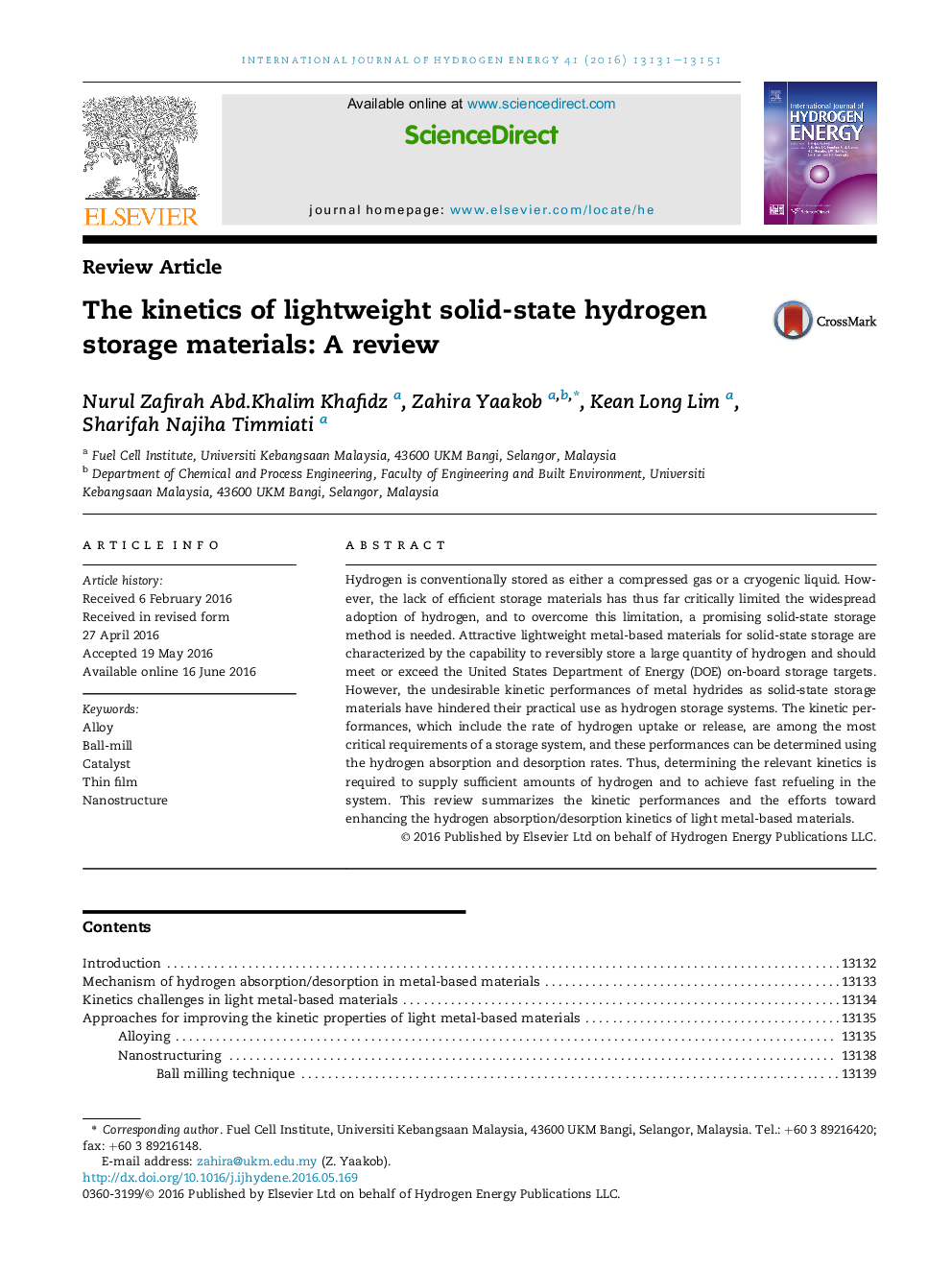| Article ID | Journal | Published Year | Pages | File Type |
|---|---|---|---|---|
| 1268227 | International Journal of Hydrogen Energy | 2016 | 21 Pages |
•Lightweight metal-based hydrogen storage materials (HSM) are kinetically stable.•The hydrogen sorption mechanisms of lightweight HSM are discussed.•Several approaches to improve their kinetic properties are summarized.
Hydrogen is conventionally stored as either a compressed gas or a cryogenic liquid. However, the lack of efficient storage materials has thus far critically limited the widespread adoption of hydrogen, and to overcome this limitation, a promising solid-state storage method is needed. Attractive lightweight metal-based materials for solid-state storage are characterized by the capability to reversibly store a large quantity of hydrogen and should meet or exceed the United States Department of Energy (DOE) on-board storage targets. However, the undesirable kinetic performances of metal hydrides as solid-state storage materials have hindered their practical use as hydrogen storage systems. The kinetic performances, which include the rate of hydrogen uptake or release, are among the most critical requirements of a storage system, and these performances can be determined using the hydrogen absorption and desorption rates. Thus, determining the relevant kinetics is required to supply sufficient amounts of hydrogen and to achieve fast refueling in the system. This review summarizes the kinetic performances and the efforts toward enhancing the hydrogen absorption/desorption kinetics of light metal-based materials.
